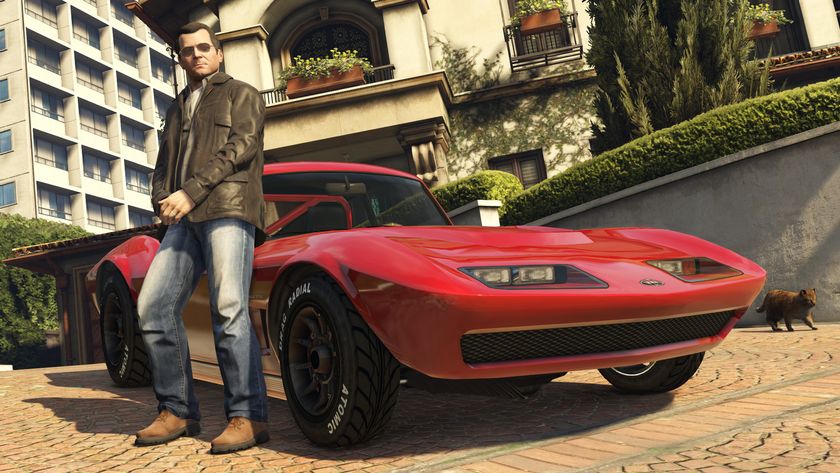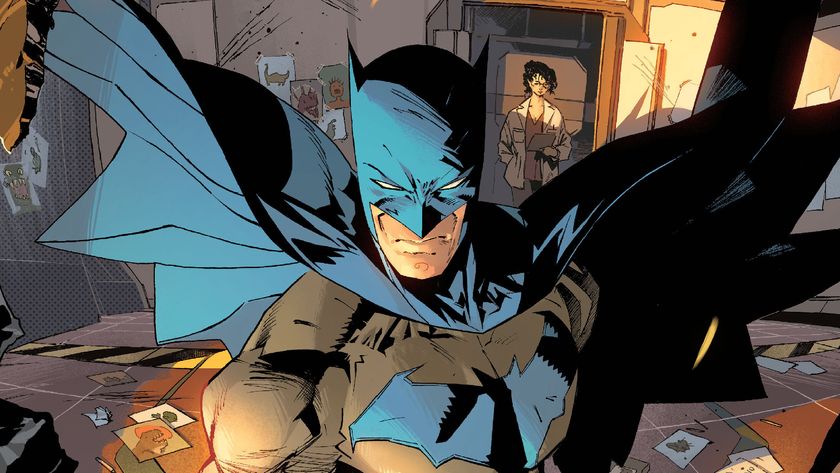Razer Blade review - 8 reasons to buy it (and 6 not to)
We put Razer's new gaming laptop through its paces
PC gaming on the go
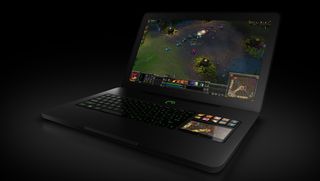
A few years back, ever other analyst was predicting an end to PC gaming. In 2013, that couldn't be any further from the truth. While consoles scramble towards the next-generation, PCs are already there, with amazing visuals and bountiful exclusives, from SimCity to StarCraft II to any number of stellar free-to-play games. Unfortunately, dedicating a space for a desktop gaming rig can be difficult. That's where it helps to know the best gaming laptop.
We took Razers unique, ultra-expensive, high-powered gaming laptop for a spin. At $2,500, should you buy it? Over a lengthy period of testing, we came up with eight reasons you should and six reasons you shouldnt.
Good: Powerful Components
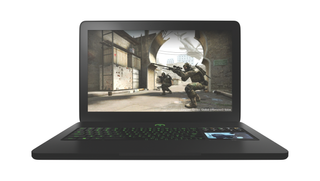
Behind the thin, sleek frame sits an Intel 2.2Ghz Core i7-3632QM quad-core CPU, which is one powerful beast of a mobile CPU. It didnt have any trouble keeping up with whatever we threw at it and even held up during the most CPU-intensive processes we could manage, including Borderlands 2 on high while capturing lossless video at the same time. This is due in part to the CPUs Turbo Boost, which clocks it up to 3.2Ghz.
The NVIDIA GeForce GTX 660M 2GB GDDR5 GPU fared just as well, holding up well on the highest settings without any noticeable tearing or slowdown, which is rather remarkable for a discrete mobile graphics chip on a laptop.
Good: Sleek and Sexy Look
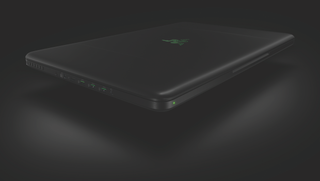
While it might be hard to believe for a laptop with a 17 display, the Razer Blade manages to look sleek throughout with its matte black finish. It doesnt focus on having the most eye-catching design or having speakers that replace your 5.1 surround system, but rather it opts for a design that can fly under the radar a bit while still having all the features that gamers want.
It has a simple, illuminated Razer logo on the top of the Blade, similar to the Apple logo on its MacBook line, but thats about as flashy as it gets.
Bad: Short battery life
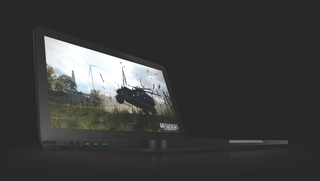
While its hard to expect much battery performance out of a gaming laptop, especially when modern laptops dont get more than five or six hours anyway, the Blade seems to tap out right around 2 hours and 45 minutes when watching a movie--even less when playing games.
Sign up to the 12DOVE Newsletter
Weekly digests, tales from the communities you love, and more
Its tough to really knock it for this though, as most laptops this size arent really meant as laptops; theyre desktop replacements. You arent going to be doing extreme gaming for long periods of time in a place where you wont have at least one power outlet. Besides, running Crysis 3 for a few hours on the train is better than reading, so well take what we can get.
Good: Illuminated Top Keys
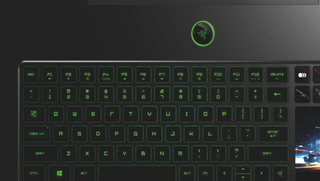
While it might seem like a small thing, the new Razer Blade has illuminated keys on the top row, something that was oddly absent from the first iteration, making it difficult to find the keys responsible for music controls or adjusting brightness while in a dark space.
Instead of opting for a LED backlit keyboard that allowed the customizable colors, the Blade features solid black keys with green lettering that are lit from behind by a muted, solid color, which keeps it from becoming too glaring and bright for night use. For a $2800 laptop, the lack of illuminated top keys was a weird omission; one that turned into a welcome fix this time around.
Bad: Keyboard is unresponsive
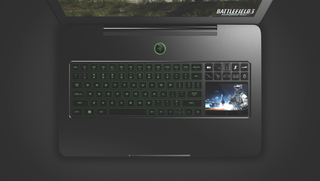
For a computer that seems so elegantly designed, the keyboard is a bit of an anomaly. Its small, clunky, and unresponsive. The Blade boasts an Anti-Ghosting Keyboard, which is meant to alleviate unintentional button presses, but in reality, it misses intentional more often than not.
This was only amplified with the arrow keys, which, for some reason, were the worst of them all, often requiring slow, deliberate presses to even register. It seems a bit out of place compared to the high-quality of everything else. The lack of a num-pad on a 17" notebook is also somewhat odd, but that has more to do with the Switchblade UI than anything else. What is Switchblade? Well...
Good: Switchblade UI
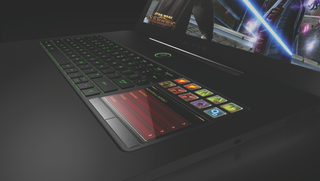
The Switchblade UI is undoubtedly the most unique and noticeable aspect of the Razer Blade. Its housed within 10 programmable LCD buttons and a 4-inch, 800x480 monitor seated behind the trackpad that allow you to customize the UI for different purposes on the fly.
Playing games? You can assign macros that correlate to in-game actions to the keys above the trackpad for quick access and if youre running a supported game, like Team Fortress 2, custom graphics will appear on each of the keys, making it easier to see what youre pressing at a glance. You can even use the screen as a second monitor for browsing Facebook or watching YouTube videos. Its extremely cool and one of the best features of the blade overall.
Bad: It gets really hot
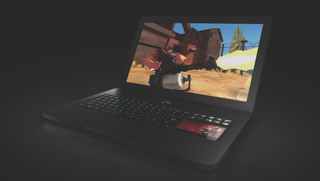
Heat is an issue for most laptops. Theyre so focused and compact that we havent really put an emphasis on leaving enough space for the parts inside to vent properly. This is only amplified when these are high-end gaming components running on full blast.
This is somewhat negated by additional rubber feet on the bottom of the device that prop it up from whatever surface its on, but that doesnt work as well when placed on a lap. The assumption is that itd be placed on a table, but even then, the heat output is noticeable, as is the sound of the fan working, which is almost loud enough to be picked up in a team chat microphone.
Good: Beautiful Screen
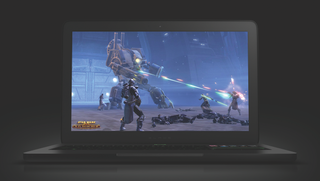
As with past iterations, the Razer Blade rocks a 17.3 1920x1080 LED-backlit LCD. Its huge, but, despite its slightly low resolution compared to other Apples Retina displays and other displays in this price range, it still manages to look exceptional, even when viewed up-close. Unfortunately, this cannot be said when looking at it from the side, as it falls victim to the age-old viewing-angle shimmer, which is a disappointment because it isnt present on many screens in this price bracket.
The screen holds it beauty at lower-brightnesses and doesnt lose its stellar color balance, which is normally a challenge and is something that distinguishes it from lower-quality screens.
Bad: Poorly executed trackpad
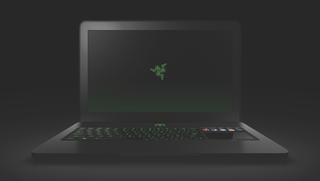
The idea of having the Switchblade UI seated behind the trackpad, giving the appearance of an LED screen trackpad, is an interesting concept. You can put whatever you want there and check your Facebook or Twitter without having to leave a game. Unfortunately, it doesnt hold up well for basic trackpad use. Its slow and subdued, almost to the point of frustration. It just doesnt hold up as well as other basic trackpads. You cant just slide a finger across; it has to be the flat print of your finger, otherwise it doesnt work.
The placement of the trackpad is somewhat odd as well, considering the standardization of the trackpad below the keyboard on a laptop. It isnt something that you see very often and can be extremely difficult to get used to if youve used any other modern notebook recently.
Most Popular






